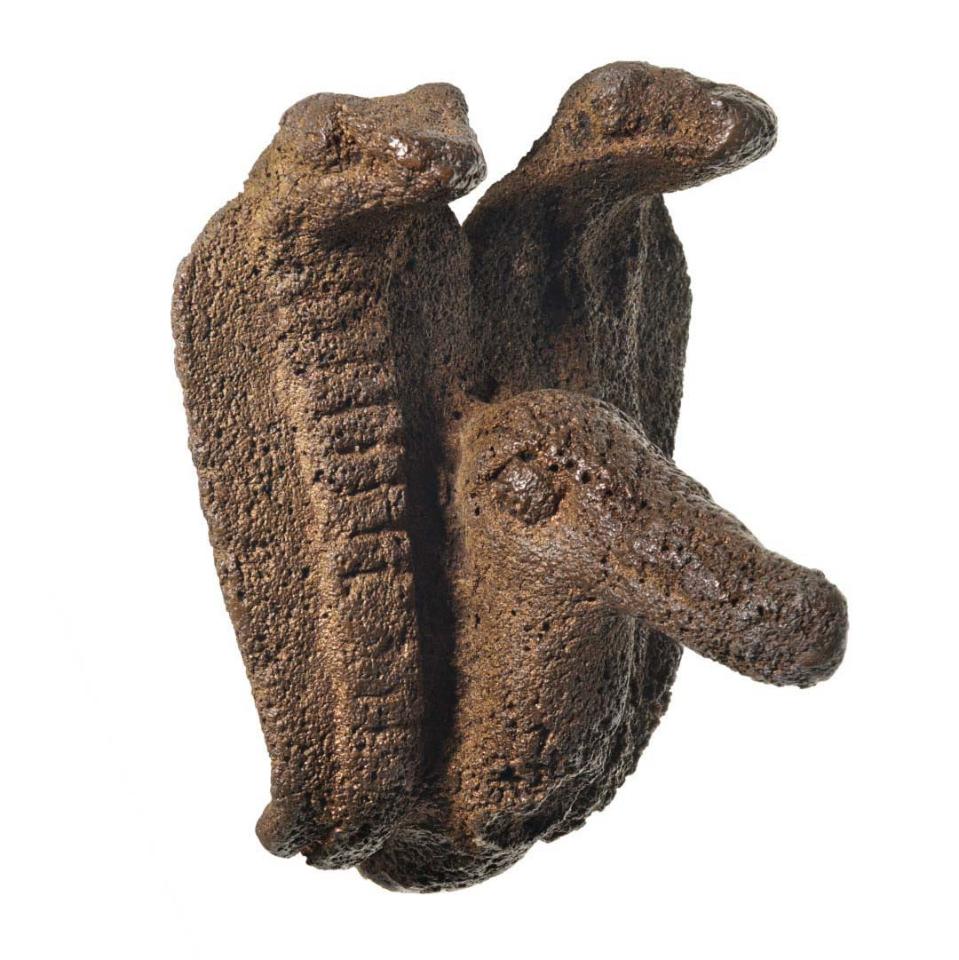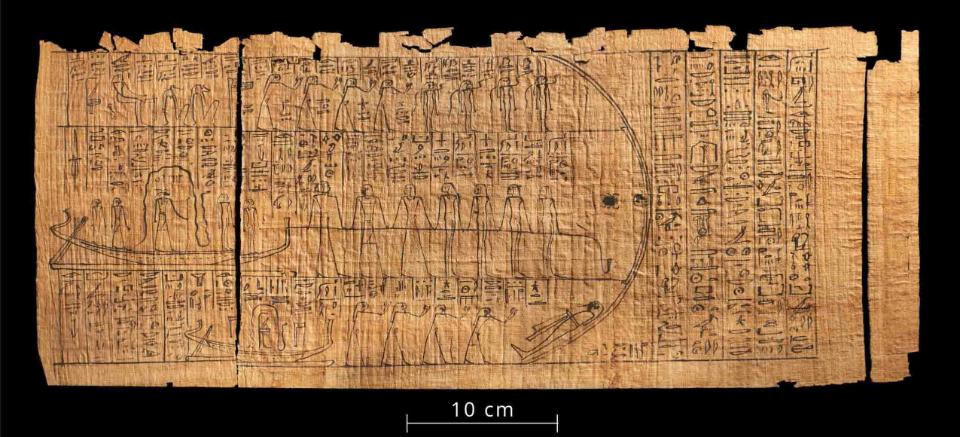Animals as Avatars
Not all animals associated with divine power were terrifying creatures. The goddess Hathor was often shown in the form of a cow, while the god Thoth could be depicted with features of both the ibis bird and a baboon.
An engaged stone statue of the Egyptian goddess Hathor who is represented in fully bovine form. Traces of yellow paint and gold leaf remain on her ears and sun-disc. The inscriptions, naming Pharaoh Ramesses IV of the 20th Dynasty of the New Kingdom, were originally painted blue. Esna, Egypt; New Kingdom (1550-1069bc). E.66
Limestone statuette of the head of the goddess Hathor, shown as a human woman with the ears of a cow. The figurine bears the rebus Ma’at-ka-re, one of the names of the New Kingdom queen Hatshepsut. Egypt; New Kingdom (1550-1069bc). E.5268
Faience sistrum (musical percussion instrument) decorated with the image of the goddess Hathor, shown as a woman with the ears of a cow. Egypt; Late Period (664-332bc). E.202
Faience statuette of the god Thoth, shown as an ibis-headed man. Egypt; Late Period-Ptolemaic Period (664-30bc). E.9241
Upper part of faience statuette of the god Thoth, holding an eye-of-Horus beneath his beak. Memphis, Egypt; Late Period-Ptolemaic Period (664-30bc). E.9003
Kings, queens and goddesses alike would wear crowns incorporating a rearing cobra, called the uraeus, to protect them against their enemies. Scarab beetles rolling a ball of dung across the desert invoked the passage of the sun across the sky, leading to the identification of Khepri, a form of the sun god, as a beetle.
Top part of a limestone statuette, depicting either a snake goddess or uraeus, wearing a crown. Egypt; Dynastic Period (3150-30bc). E.5264
Head and crown from a stone statuette of a queen or goddess, wearing a crown of uraei topped by a sun disk and cow horns. Egypt; New Kingdom-Ptolemaic Period (1550-30bc). E.9321
Bronze object depicting the head of a vulture with double uraei (rearing cobras) behind, and would originally have been part of the crown of a statue of a a queen or goddess. Egypt; Late Period-Ptolemaic Period (664-30bc). E.9298

Image by Julia Thorne, Tetisheri
Small soapstone amulet in the form of a rearing cobra. Egypt; Dynastic Period (3150-30bc). E.9168
Papyrus sheet inscribed with text from the Amduat, a largely pictoral work illustrated with images of the night-time journey of the sun through the Underworld. In this sheet, the sun is given the form of the god Khepri, represented by the scarab beetle. The curved depiction to the right of the beetle is the personification of the sky, as the goddess Mut. At the bottom of this composition sits the mummy of Osiris. So this section of the papyrus illustrates that Osiris, as king of the underworld, always sits below the horizon. Egypt; third Intermediate Period (1077-664bc). E.507-2

Previous: Manifestations of Power
Next: Zoomorphism